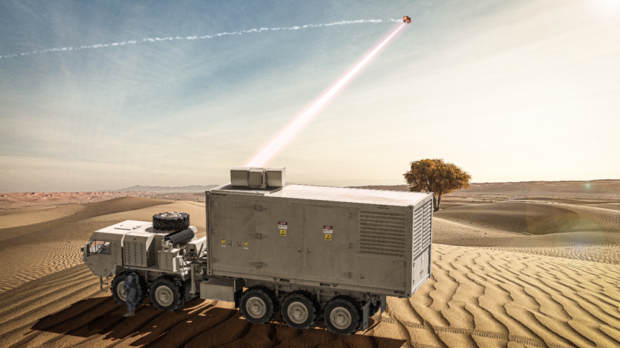The US Army has selected at least one company, Lockheed Martin, to develop a new high-energy laser prototype to protect fixed and semi-fixed sites from incoming aerial threats, according to a contract notification.
On Wednesday the service announced Lockheed has received an “other transaction authority” deal worth up to $220.8 million to “to develop, integrate, manufacture, test, and deliver” an Indirect Fire Protection Capability-High Energy Laser (IFPC-HEL) prototype weapon system. For now, though, the Army has provided the company with $154 million in fiscal 2023 funding, and the remaining funds could be funneled toward the effort between now and mid-October 2025.
A Lockheed spokesperson referred questions about the deal to the service, but the company has been working on HEL projects including a 300-kilowatt laser under the Pentagon’s High Energy Laser Scaling Initiative (HELSI). At time of publication, a service spokeswoman has not responded to Braking Defense’s questions about the program, to include if other companies have been tapped to build a competing prototype. It is also not clear what Lockheed’s deliverables include or what tests the weapon prototype will face.
However, in March the Army’s Rapid Capabilities and Critical Technologies Office RCCTO) asked industry to submit white papers for 100-plus kilowatt class lasers and shed some additional light on program plans.
“IFPC-HEL is intended to protect fixed and semi-fixed sites from cruise missiles, rockets, artillery, and mortars; unmanned aerial systems; and rotary and fixed-wing threats,” the service wrote then.
“This effort will provide up to four complete HEL weapon systems (e.g., HEL, beam control, beam director, battle management, and power and thermal management), integrated onto a government furnished property platform,” it added. “The HEL weapon systems must be delivered no later than 20 months after award.”
If successful, those HEL weapon systems will then be used on live fire testing against “operationally relevant targets” the Army wrote.
The FY24 budget request documents also note that the service wants to transition IFPC-HEL work, along with efforts to design a future IFPC-high powered microwave, from its RCCTO over to a new team in 2025.
“The IFPC Inc 2 product office will establish an initial IFPC direct energy team to coordinate the transfer of responsibility, as well as determine IFPC Inc 2 product office requirements for these products starting in FY23,” the Army explained. “Current planning assumes the products will require additional development, integration with the [Army Integrated Air and Missile Defense] AIAMD architecture, and testing.”
Last August Lockheed also delivered a 60-plus kilowatt laser to the US Navy, making good on a contract awarded back in 2018.
Source: Breaking Defense

